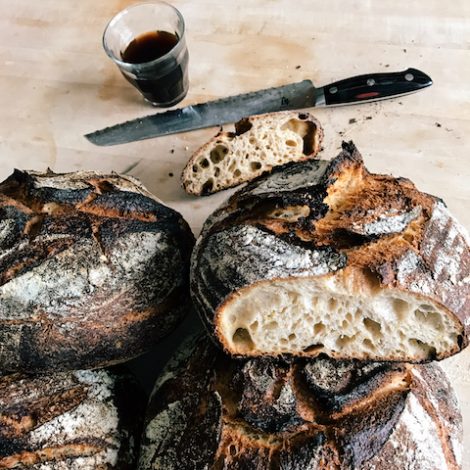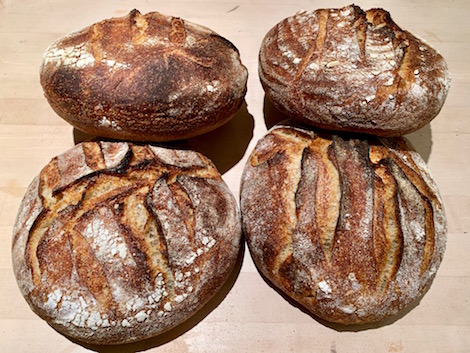02019-04-06 | Uncategorized
His pipe was broken too, with a piece of tape holding it together. He lit it, cranked up the gramophone and out came the voice of an Arab singer from the 1940s, the same one that my grandfather used to listen to in Lebanon. For a moment I was no longer a photographer shooting ruined Aleppo. I was a boy in my mountain village, my grandfather sitting on the sofa in the afternoon listening to the “belle epoque” songs of Arab music.

That image is amazing. How powerful music is, emerging from that quiet little gramophone. No, I think it’s exactly because it comes from a quiet little gramophone…
Read the article here: AFP Correspondent
02019-04-03 | Meditation
The cat stretches itself into a long line, then sits up. It appears to look into space, relaxed and unconcerned. Does it see ghosts? Does it dream with open eyes? I think it is practicing the Hunter Meditation.
I believe that a long time ago, perhaps tens of thousands of years ago, hunters discovered this form of mediation, different from what we today know as Yoga or Zen or Vipassana meditation, but perhaps different only in its goal. While most meditation practiced today aims to calm the person, to quiet or focus the mind, the Hunter Meditation had the simple goal of putting food on the table… and probably had interesting side effects other people eventually observed.
When tracking trophy a hunter might scan the horizon with his eyes, looking for the animal they want to kill. When looking for food a hunter, human or beast, doesn’t want to miss the nearby rabbit just because they are busy scanning the horizon. So, I imagine, the hunter sat quietly and opened their eyes to everything in their view, from one corner of the eye to the other. Most animals don’t see that which doesn’t move, and so the hunter’s stillness is better than the movement of searching. Keeping the head still and the eyes open, but not staring, not scanning, the hunter waits for any prey’s movement. The hunter’s breathing slows naturally, their eyes are soft but alert, and they become one with their surroundings.
02019-04-02 | Reading
I have read several books by Douglas Rushkoff. His observations are always smart, deep, inspiring. His latest work is called Team Human. I just started reading it.
“Survival of the fittest is a convenient way to justify the cutthroat ethos of a competitive marketplace, political landscape, and culture. But this perspective misconstrues the theories of Darwin as well as his successors. By viewing evolution though a strictly competitive lens, we miss the bigger story of our own social development and have trouble understanding humanity as one big, interconnected team.”
Excerpt From Team Human by Douglas Rushkoff
https://itunes.apple.com/us/book/team-human/id1397987309?mt=11
02019-04-02 | Uncategorized
The reason I started making bread at home was simple: I could not find decent bread where I live. Having grown up surrounded by bakeries, and with fresh rolls and crusty sourdough bread a staple that could be counted on when I came home from school, this was a problem for me. There were so many neighborhood bakeries that my family became very discerning… we would go to this bakery for the freshest little bread rolls, to that one for the best large sourdough loaves, and preferred a third one for sweet items.
A baker told me that it wasn’t possible to make bread in a home oven, because the dough needed steam to develop a soft crumb, and home ovens expel humidity. Professional ovens were designed to contain humidity and have a mechanism to inject steam to create the perfect crumb. For decades I believed this to be true and unhappily made do with the bread I found in local bakeries.
When I had lived without good bread for many years, I suddenly felt that the difference between a house and a home was… bread. The smell of bread was home. I searched the internet looking for a solution to baking bread in a home oven and five years ago I discovered a book by an American baker. The book was called Tartine and it discribed a method of using a Dutch oven to contain the moisture in the dough in order to create a soft crumb. After twenty minutes of baking one removed the top of the Dutch oven and the bread could then develop the dark crust.
According to the book’s instructions I mixed water and flour with my hand and waited patiently for it to attract that mixture of wild yeast and microbes that becomes the sourdough mother, that magical substance that makes the dough rise and which creates the beautiful airholes in the bread. Making bread is alchemy. By taking the most simple ingredients, water, flour and salt, and turning them into bread, one claims membership in humanity, for only humans use fire to create food. Breaking bread is a sign of making peace in many cultures. Sharing bread is a sign of making a stranger feel welcome.

I was lucky and the very first loaves turned out well enough. The house suddenly smelled like a home. Every Sunday morning I made dough and worked it from eight o’clock in the morning until about five in the afternoon, when I turned the oven on to bake. I discovered I loved the pace of making bread, which combines waiting with stretching and folding the dough every half hour. It felt right, this combination of doing and waiting, breathing in and exhaling, like growing plants or creating art… action followed by observation and contemplation.

I decided I had to share my bread and on Sundays I began to make four loaves. On Monday mornings I drove around town and delivered bread to my friends. I have done this for over five years now, having started in the Fall of 2013. Since January of 2014 I have documented the ingredients and measurements of every loaf. Loaves that are mostly white flour, loaves that are mostly whole wheat flour, loaves with lots of semolina, loaves with barley porridge, with brown rice porridge, black rice porridge, loaves with oatmeal, loaves with boiled potato slices, loaves with herbs, loaves with small chunks of cheese…
In time making bread has become part of me, like meditation and playing the guitar before, and today I cannot imagine my life without a weekly bread day, the day that starts with choosing ingredients from the cupboard, mixing them together with water and the leaven that was prepared the previous day. Bread day is punctuated by examining and turning the dough every half hour, and always culminates in turning on the oven and getting ready to bake. And by the end of that day my house always smells like a home.





